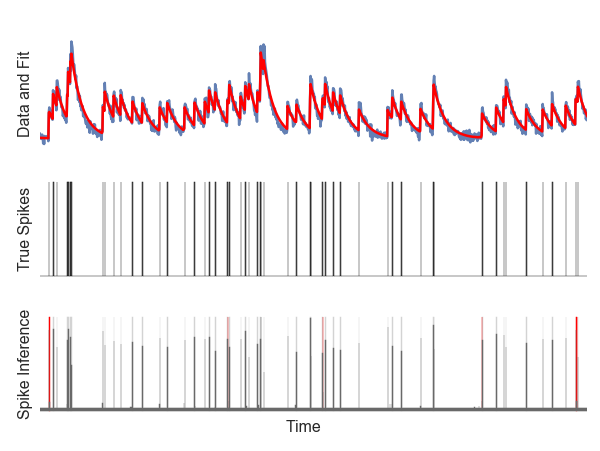New spike inference for SIMA

Following up SIMA, which has been covered here before:
The SIMA team has released a new version of its toolbox that includes a spike inference algorithm developed by Eftychios Pnevmatikakis and Liam Paninski’s group. This approach permits the efficient estimation of the most likely spike train underlying a sequence of calcium imaging observations.
The new algorithm improves upon earlier work in two significant ways:
– Parameter estimation has been significantly improved to achieve good performance out of the box on many different kinds of calcium imaging data.
– The algorithm can take advantage of standard conic optimization solvers (like Mosek) to run very fast.
The new toolbox can be found here, or here, or here.
Further details about the algorithm can be read in this preprint.
Post by Tim Machado.
Interesting
One could now quickly run this over the now freely available ground-truth ephys-plus-imaging GCaMP6 data from the Svoboda lab (https://t.co/erhbaDNpOf) to see how the approach performs in comparison to the others.
So far I’d say that most inference approaches perform reasonably well on sparse activity but are strongly challenged by indicator non-linearity as soon as episodes of (eg. stimulus-evoked) high activity are interspersed with periods of low rates of firing…
It would be nice to hear other people’s opinions on spike inference from non-linear indicators!